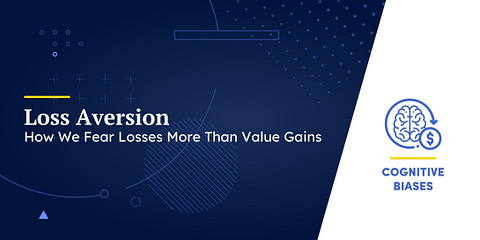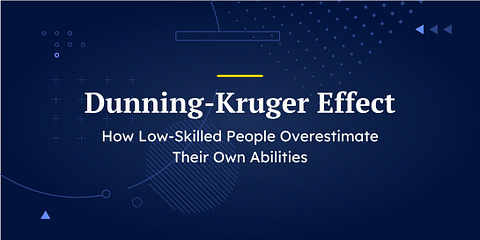You have likely committed the sunk cost fallacy a number of times in your life when making decisions; if you have ever let your rarely worn clothes fill up your wardrobe just because they were so expensive, or over-eaten because you ordered too much food and didn’t want to waste your money, you have first-hand experience with this tendency.
Sunk cost fallacy, sometimes known as the Concorde fallacy, is a cognitive bias that causes people to include non-recoverable past costs in their decision-making process in a way that leads to more losing or suffering.
This irrational line of reasoning is extremely common and is shown to influence people’s decisions in many domains and situations, from economics to everyday decision-making.
As such, it is important to understand the sunk cost fallacy; you’ll be better able to avoid it, and perhaps save yourself from additional, unnecessary losses in the future. In this article, we’ll explain how this fallacy works in more detail, as well as show several examples of it.
Definition
✍️ A sunk cost is a concept in economics that refers to previously invested resources, such as money, time, or energy, that cannot be recovered in any way.
The sunk cost fallacy is the tendency to continue an endeavor or behavior, due to the resources they have already invested (i.e., the sunk costs), making them worse off than if they had decided not to do it.
✈️ Furthermore, it’s also sometimes referred to as the “Concorde fallacy”. The name comes after a case where the British and French governments continued funding the development of the Concorde passenger airplane even though it was clear that there was no profit to be made.
Why It Occurs
Generally, sunk costs do influence people’s decision-making processes, whether in business or in our everyday lives.
Typically, when someone has made an investment – whether in the form of money, time, or energy – on a particular endeavor, they are more likely to continue with it because they feel that the past investment justifies, or perhaps even requires, them to make further investments on that endeavor.
A major reason for this is the commitment bias, which is a cognitive bias that describes how people tend to stick with their past behaviors, even if fresh evidence were to show that it likely won’t lead to a good outcome.
Additionally, according to the renowned psychologist Daniel Kahneman and Amos Tversky, another factor is the loss aversion effect, or the tendency to prefer avoiding losses more than pursuing equivalent gains.
Why It’s Irrational
A common example of the sunk cost fallacy in action, as mentioned earlier, is when someone chooses to continue eating, even though they are already full, simply to avoid “wasting” any money.
According to economists, such decision-making is irrational and harmful because it will most likely lead to additional suffering. In this case, the person choosing to over-eat ends up suffering in two different ways (wasted money and over-eating), as opposed to just one (wasted money) if they were to “cut their losses” – that is, to ignore the sunk cost and accept the fact that they can’t finish the whole meal they’ve paid for.
As such, falling prey to the sunk cost fallacy is also described as “throwing good money after bad.”
It is important to keep in mind that sunk costs are costs that have already incurred and cannot be recovered. Thus, they shouldn’t be a factor in future decisions anymore. Instead, when choosing the next course of action, the most rational thing to do would be to look at the current state of things and how the future is likely to turn up in regard to your investment.
Examples
✈️ Concorde Airplane
A famous real-life example of the sunk cost fallacy is when the British and French governments were in a rush to develop supersonic Concorde airplanes.
When the planes were put in use, it became clear that they weren’t profitable; the cost of operating them was higher than the income that they were able to generate. This was, for example, due to the planes having little space for passenger seats but requiring high amounts of fuel.
Now, you would think that the British and French would have quickly stopped flying these airplanes after the findings. However, this was not the case: instead of admitting their mistake and cutting their losses, they kept flying them for 27 years at a loss.
📉 Investing
John buys a number of Company XYZ’s stocks. Next month, the value of his stocks decreases by 10% due to an unforeseen event. However, instead of re-evaluating his investment by looking at the current situation and the realistic future prospects of his stocks, he holds on to them in hopes of recovering the lost money.
🧘 Yoga Class
Mary bought 5 yoga class entries for $50, but after the first session, she found out that she hates it and doesn’t want to go again. However, since she couldn’t get a refund for the money she had already paid, she decided that it is best to use up all the entries.
🏀 Basketball Game
The following example was given by Douglas Walton in his paper The Sunk Costs Fallacy or Argument from Waste:
A family pays $40 for tickets to a basketball game to be played 60 miles from their home. On the day of the game, there is a snowstorm. They decide to go anyway, but note in passing that had the tickets been given to them, they would have stayed home.
Douglas Walton, The Sunk Costs Fallacy or Argument from Waste, University of Winnipeg.
✍️ Writing a Poem
This example is from a paper The Sunk Cost Fallacy: A Literature Review and an Empirical Test by Giacomo Falchetta:
Suppose a writer spends a whole morning composing the first verses of a poem and yet in the afternoon he realizes that he feels a new kind of inspiration for the incipit. Despite the fact that the new inspiration is deeper, the poet is reluctant to bin his creativity produced during the morning, since it is something that is unlikely to persist or come back in the future.
Giacomo Falchetta, The Sunk Cost Fallacy: A Literature Review and an Empirical Test, 2015.







